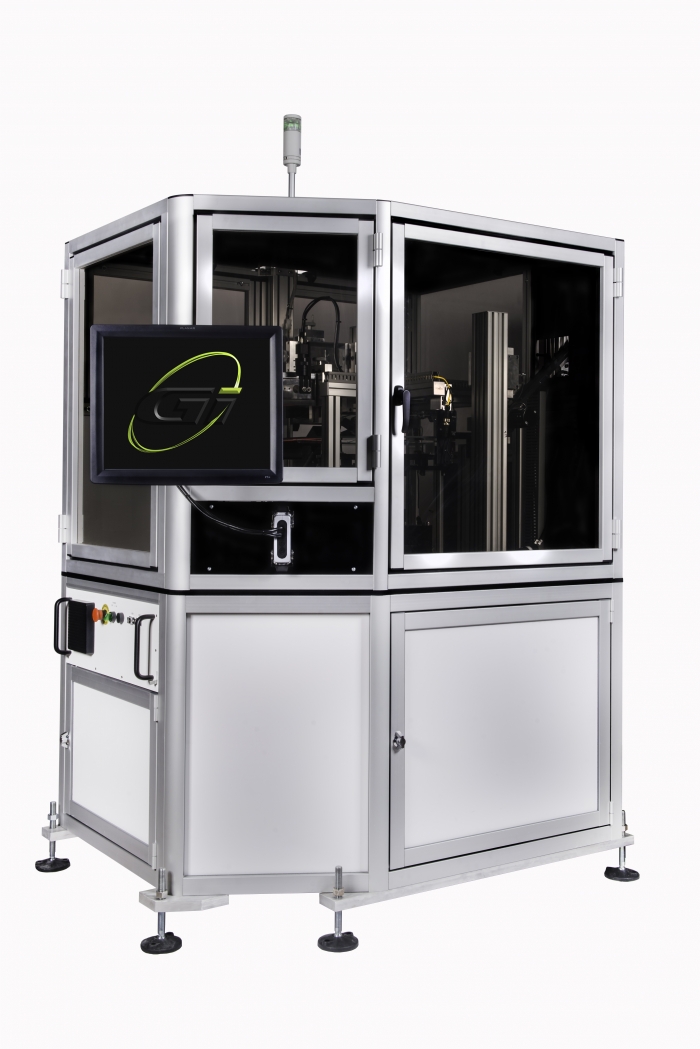Ensuring zero internally threaded fastener defects

New high-speed sorting technologies, including vision based hole and thread detection, are making traditional methods obsolete
>
It is critical to inspect formed metal fasteners used in aerospace to ensure zero defects whether for safety, mission critical performance, or to optimise the manufacturing process. Conventional methods to do this exist, such as sorting mechanically for size or hand sorting with optical comparators. Yet traditionally, it has been difficult to inspect internal threads for tiny defects such as chips, tears, weld splatter, as well as short or missing threads.
Inspecting the vertical walls of a fastener hole and its threads is difficult for the human eye due to its small size as well as lighting and viewing issues. Not only is such an inspection process slow, labour intensive, and subject to interpretation, but also prone to human error – particularly over long periods when fatigue can degrade accuracy.
“Because many of our parts such as small fuel fittings and unions are safety parts, our customers will not accept anything but 100% quality, so we carefully check key areas including internal threads,” says Chuck Abbate, vice president of operations at H&L Tool, an ISO-TS 16949:2009 registered manufacturer of precision turned and cold formed fastener products. “We needed a way to make sure that all the internal features were perfect and within the print.”
However, even typical cameras and laser-based equipment have difficulty detecting required features inside of parts, and the deeper the hole or recess the more challenging this becomes.
“One of the problems that arises when looking at internal features on a machine is the different colour in the plating and different lighting,” says Abbate. “It is very important to get a machine that determines what it is looking at, that it is truly looking at the part and not at glare or a shadow.”
Now to help manufacturers ensure zero defects in their fasteners, a number of advanced high-speed sorting technologies are making slower, less reliable, traditional methods obsolete.

The device uses a series of front and backlit cameras to calculate a part’s height, profile as well as inner and outer diameters. As configured for H&L Tool, the device also has a number of advanced options. This includes cameras to check for internal threads, an axial viewer that detects surface imperfections on multiple sides of a part at once, and eddy current capability, which enables checking for metallurgical defects along with plating or hardness variations.
With 360° internal thread inspection capability, the General Inspection device incorporates hole inspection optics to specifically image and measure both the bottom of a hole and its vertical walls. This allows great detail of ID threads and the detection of very small defects like weld splatter, torn threads, reamed threads, chips in threads, short or missing threads, as well as a single damaged thread.
“It is the only sorting machine I have seen that has the capability to totally look inside the part,” says Abbate. “The different types of special lenses on these cameras are very good at looking at all the internal features, which we could never get on a machine before.”

According to Abbate, the machine does a good job of distinguishing the interior part features from glare or shadow. He appreciates a dial table style glass top, which stabilises the parts during inspection while allowing viewing of the top and bottom at once. Such part stability improves image analysis, data capture and precision, while simultaneous top and bottom viewing speeds the process.
“It is all about the presentation, of how the machine presents the part to the cameras. Because the parts stand straight up on the glass dial style table that the parts ride around on, cameras with convex lenses can look straight down at the parts and see 360° around from either side. That way with 100% sorting, you don’t miss anything.”
Abbate says that a conventional V-track model inspection machine, with a 30° incline to drop the part, would have limited how much of the part interior is visible.
“Other machines cannot look at the sealing surfaces of a coupler, for instance, because they view it at an angle. You have to be able to see down in it, which the General Inspection machine has a capability to do.
“With the glass dial style table that the parts ride around on, we can view the top and bottom of a part at the same time. On a double featured piece like a union, this allows us to run it through once instead of twice.”
According to Abbate, an axial viewer also allows detection of any surface discontinuities on six sides of a part at once. With such a capability, the camera could, for instance, simultaneously “see” the top and sides of a fastener.
Along with the device’s eddy current capability, which detects any metallurgical defects including plating or hardness variations, Abbate has found the device provides the efficient, zero defect fastener sorting required.
He concludes: “We have found our new system to be at least 10 times faster than hand sorting and much more effective than typical sorting machines that look only on the outside of a part. It is a must for those who make internally threaded fasteners or connectors.”













